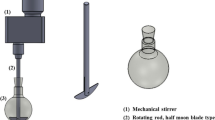Abstract
Purpose. To evaluate an anomalous increase in the specific surface area of budesonide during storage postmicronization.
Methods. Budesonide was micronized using a conventional air-jet mill. Surface areas and total pore volumes were measured using nitrogen sorption. Porosity was measured using mercury intrusion porosimetry. Particle size was measured using laser diffraction.
Results. Budesonide exhibited a surface area increase of 22 ± 2% when stored at 25°C following micronization. The rate of surface area increase was lower at 20°C, suggesting a temperature-dependent stress relaxation mechanism for the micronized particles. The increase in surface area was accompanied by: (a) an increase in total pore volume; (b) a shift of the pore size distribution to smaller pore sizes; (c) a decrease in size of particles above ∼1 μm; and (d) an increase in rugosity/surface roughness.
Conclusions. Freshly micronized budesonide exhibited an unusual and significant postmicronization increase in specific surface area upon storage under ambient conditions. Postmicronization stress-relief by intraparticle crack formation, crack propagation with time, and particle fracture seems to be the primary mechanism behind this surface area increase.
Similar content being viewed by others
REFERENCES
D. Ganderton. The generation of respirable cloud from coarse powder aggregates. J. Biopharm. Sci. 3:101–105 (1992).
S. P. Newman and S. W. Clarke. Therapeutic aerosols: I. Physical and practical considerations. Thorax 38:881–886 (1983).
I. Gonda. Aerosols for delivery of therapeutic and diagnostic agents to the respiratory tract. CRC Crit. Rev. Ther. Drug Carrier Syst. 6:273 (1990).
L. G. Austin and O. Trass. Size reduction of solids: crushing and grinding equipment. In M. E. Fayed, L. Otten (eds.), Handbook of Powder Science and Technology, Chapman & Hall, New York, 1997 pp. 586–634.
M. O. Omelczuk, C. C. Wang, and D. G. Pope. Influence of micronization on the compaction properties of an investigational drug using tableting index analysis. Eur. J. Pharm. Biopharm. 43:95–100 (1997).
G. Buckton, A. Choularton, A. E. Beezer, and S. M. Chatham. The effect of comminution technique on the surface energy of a powder. Int. J. Pharm. 47:121–128 (1988).
A. A. Elamin, T. Sebhatu, and C. Ahlneck. The use of amorphous model substances to study mechanically activated materials in the solid state. Int. J. Pharm. 119:25–36 (1995).
R. O. Williams III, J. Brown, and J. Liu. Influence of micronization method on the performance of a suspension triamcinolone acetonide pressurized metered dose inhaler formulation. Pharm. Dev. Technol. 4:167–179 (1999).
E. M. Phillips and P. R. Byron. Surfactant promoted crystal growth of micronized methylprednisolone in trichloromonofluoromethane. Int. J. Pharm. 110:9–19 (1994).
G. H. Ward and R. K. Schultz. Process-induced crystallinity changes in albuterol sulfate and its effect on powder physical stability. Pharm. Res. 12:773–779 (1995).
S. Brunauer, P. H. Emmett, and E. Teller. Adsorption of gases in multimolecular layers. J. Am. Chem. Soc. 60:309–319 (1938).
V. Joshi, R. K. Cavatur, V. K. Cheruvallath, S. K. Dwivedi, and G. H. Ward. Anomalous organic vapor sorption by micronized budesonide at constant vapor pressure and temperature. AAPS Pharm. Sci. (Indianapolis). 4:S3625 (2000).
H. Nyquist and T. Wadsten. Changes in surface area of zimeldine dihydrochloride hydrate on storage. Acta Pharm. Suec. 21:235–244 (1984).
T. H. Courtney. Mechanical Behavior of Materials, McGraw-Hill Series in Mechanical Science and Engineering, McGraw-Hill Publishing Company, New York, 1990.
G. Mestl, B. Herzog, R. Schogl, and H. Knozinger. Mechanically activated Mo O3 1: particle size, crystallinity, and morphology. Langmuir 11:3027–3034 (1995).
L. Hixon, H. Prem, M. Prior, and J. Van Cleef. Fundamentals of Powder Technology: Focus on Size Reduction, Hosokawa Micron Intsernational Inc. 1991, Summit, New Jersey.
J. T. Carstensen. Solid Pharmaceutics: Mechanical Properties and Rate Phenomena, Academic Press, London, England. 1980.
X. M. Zeng, G. P. Martin, C. Marriott, and J. Pritchard. The influence of carrier morphology on drug delivery by dry powder inhalers. Int. J. Pharm. 200:93–106 (2000).
Author information
Authors and Affiliations
Corresponding author
Rights and permissions
About this article
Cite this article
Joshi, V., Dwivedi, S. & Ward, G.H. Increase in the Specific Surface Area of Budesonide During Storage Postmicronization. Pharm Res 19, 7–12 (2002). https://doi.org/10.1023/A:1013690929173
Issue Date:
DOI: https://doi.org/10.1023/A:1013690929173




